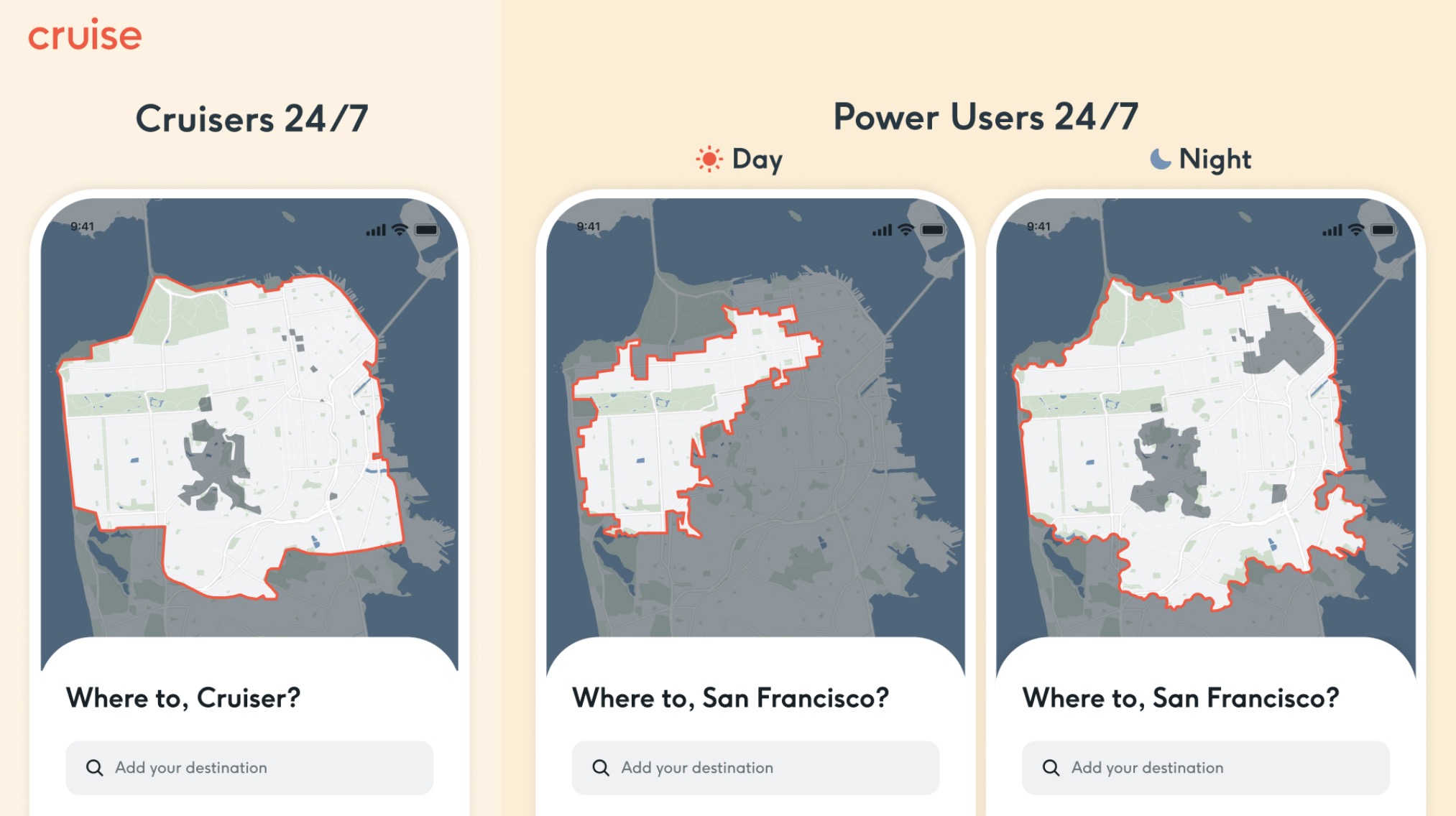Cruise co-founder and CEO Kyle Vogt said Tuesday that the company’s fleet of robotaxis are now operating 24 hours a day throughout all of San Francisco. And if you’re an employee, you can access it.
The operational milestone comes a decade since Vogt and Dan Kan co-founded Cruise, which was acquired by GM in 2016.
Like its previous rollouts, Cruise will first make this newly expanded service available to employees before opening it up to its so-called “power users” and then the general public.
Today, Cruise’s public service operates from 10 p.m. to 5 a.m. in neighborhoods on the northwest side of San Francisco. Power users, a higher designation given to public riders who provide regular feedback to Cruise, have an expanded service area at night and can also use the robotaxis during the day.
Eventually, the 24-hour, go-anywhere service will be available to the public. Cruise did not share when that will be.
In a thread on Twitter, Vogt said operating robotaxis in San Francisco “has become a litmus test for business viability. If it can work here, there’s little doubt it can work just about everywhere.”
He added that full operations will soon open in other cities.
“The capabilities and machine learning systems we’ve built to handle things in SF have proven themselves in many other cities around the world,” he wrote on Twitter.
Notably, the self-driving system in the Cruise robotaxi, an autonomous version of the all-electric Chevy Bolt, is the same that will be in the custom-built Cruise Origin. The Cruise Origin, which was first unveiled as a prototype in January 2020, is now on public streets in Austin. For now, the Cruise Origin is being manually driven to map streets in preparation for autonomous testing later this year.
On Tuesday, GM Chair and CEO Mary Barra said the automaker will stop producing its two top-selling EVs: the Chevy Bolt and its larger sibling, the Bolt EUV, by the end of 2023.
GM later confirmed to TechCrunch that it will also stop producing the autonomous version of the Chevy Bolt at the end of the year. This means that Cruise will eventually have to phase out those vehicles. Although it doesn’t appear to be happening any time soon.
Cruise is still scaling up its fleet of Chevy Bolt AVs as it expands its service area in San Francisco, Austin and Phoenix and eventually new cities, according to the company.
Since last quarter, the company’s driverless fleet has increased by 86% from 130 to 242 concurrently operating AVs, according to Cruise. And more Bolts continue to join the fleet even as Cruise starts to introduce the Origin.
Cruise said it will begin fixed-route testing of the Origin on public roads in Austin in the next few weeks. The company will continue to operate its public ride-hail service with Bolts, and eventually introduce Origins for both ride-hail and delivery alongside it.

